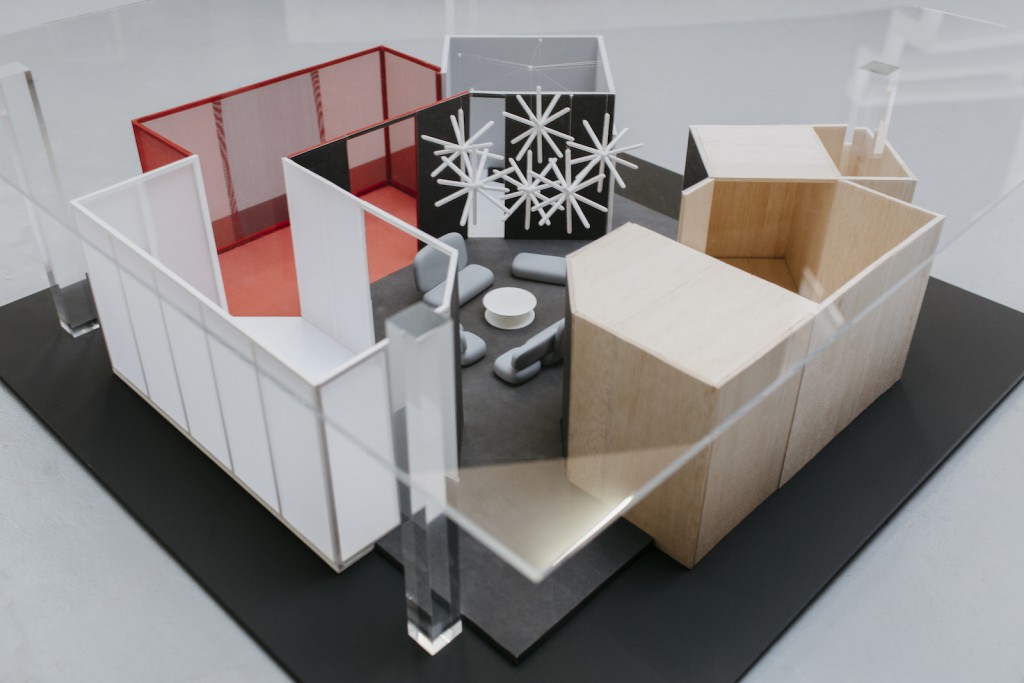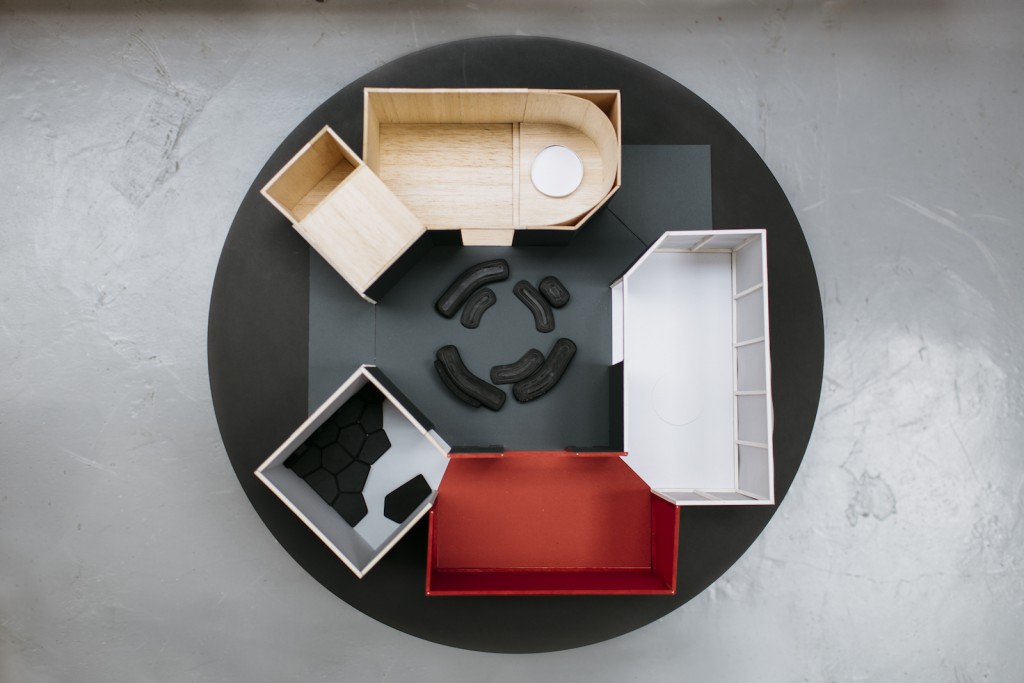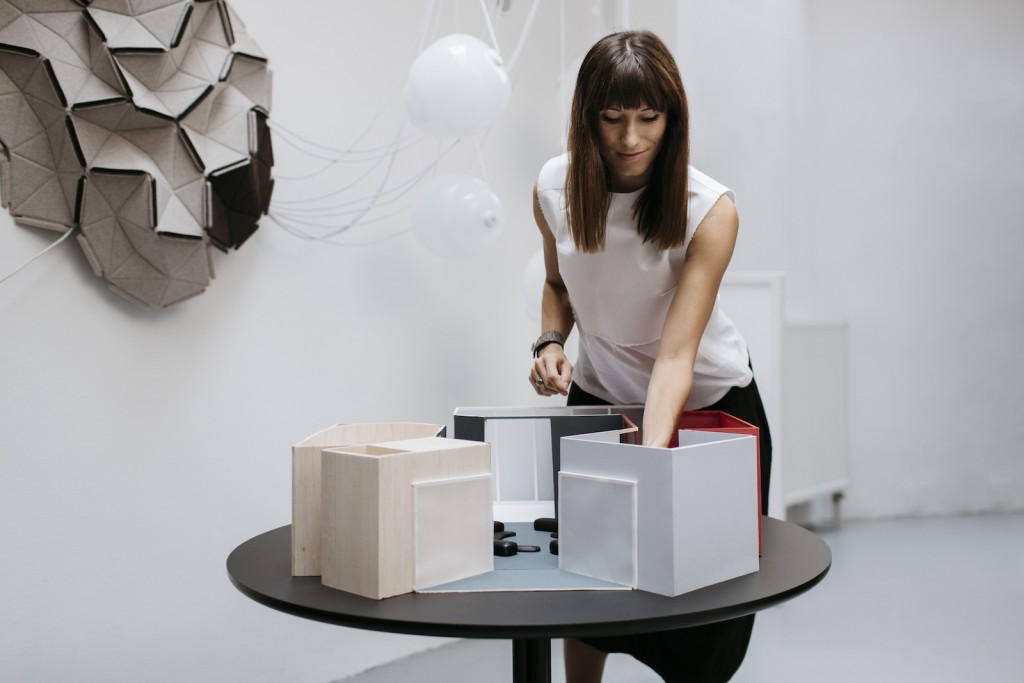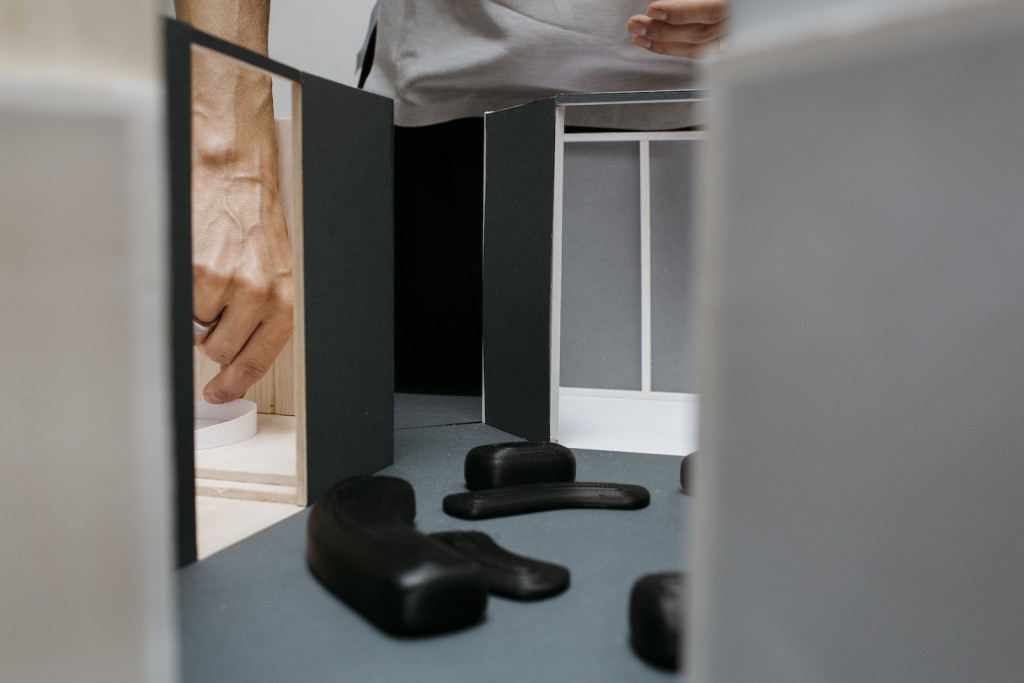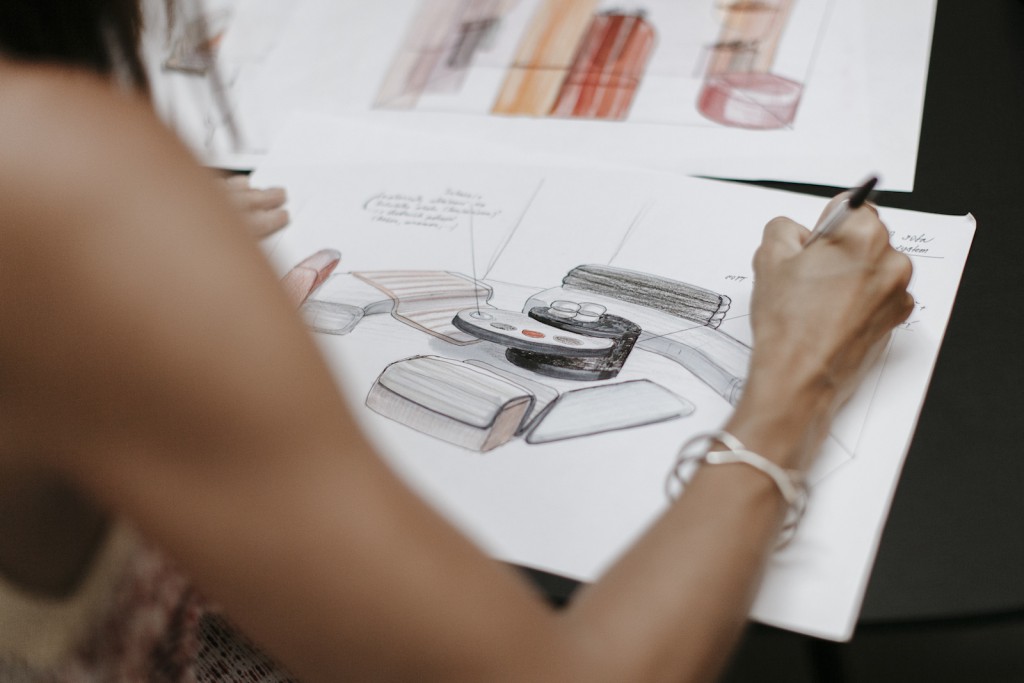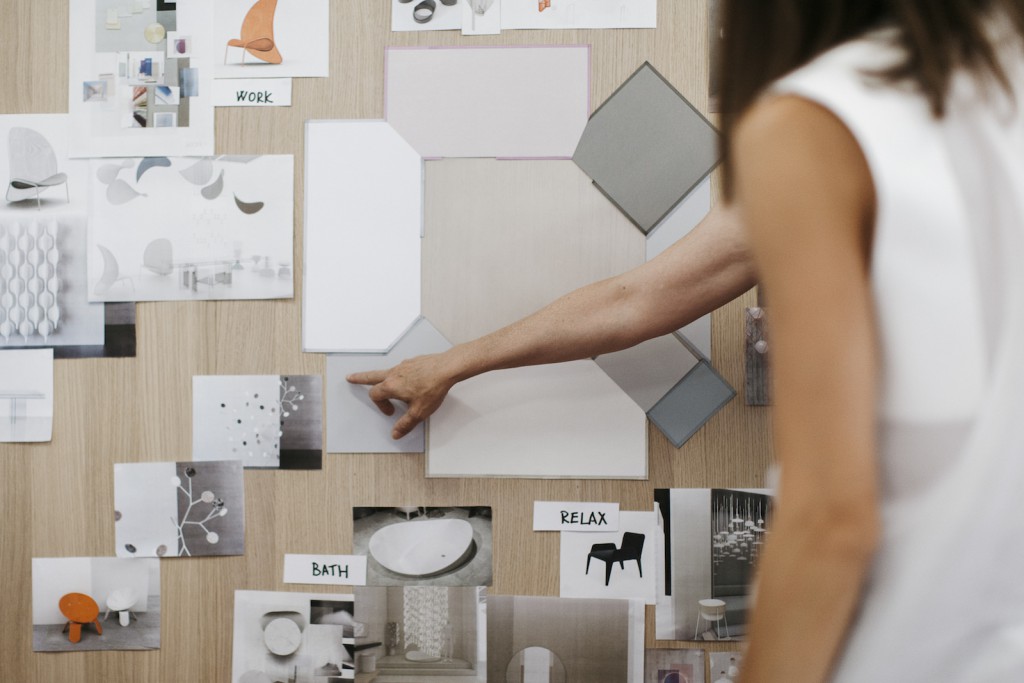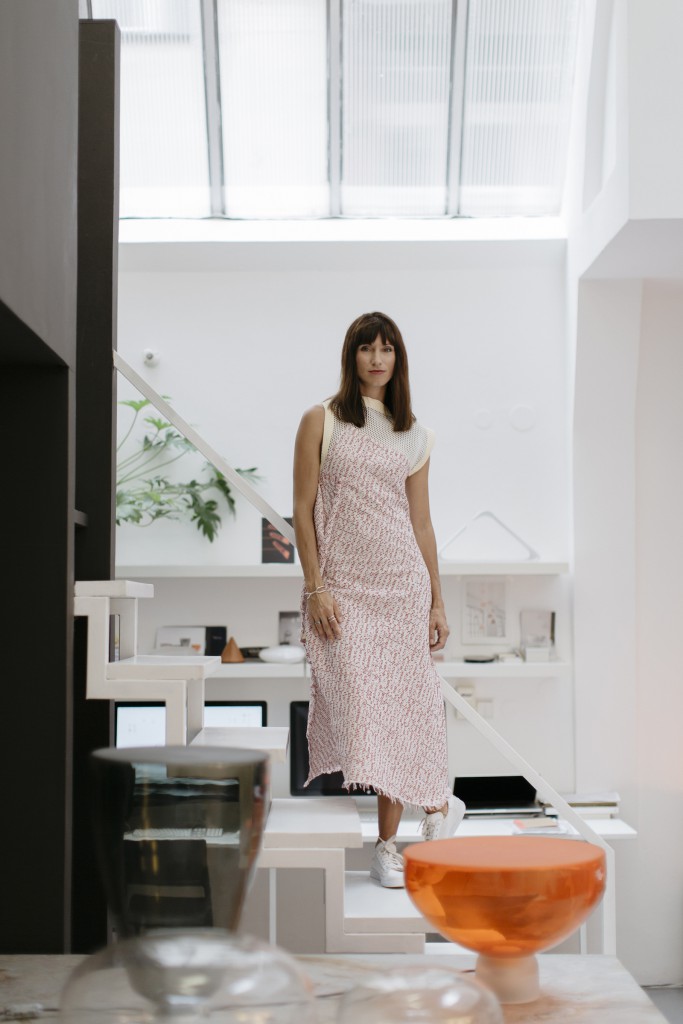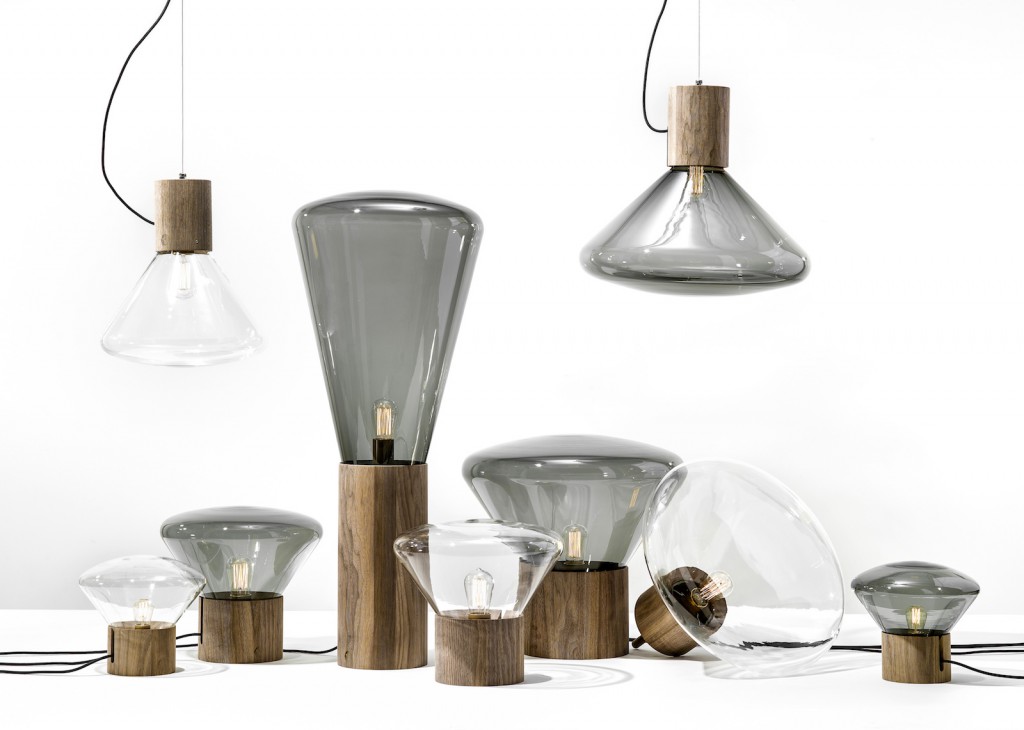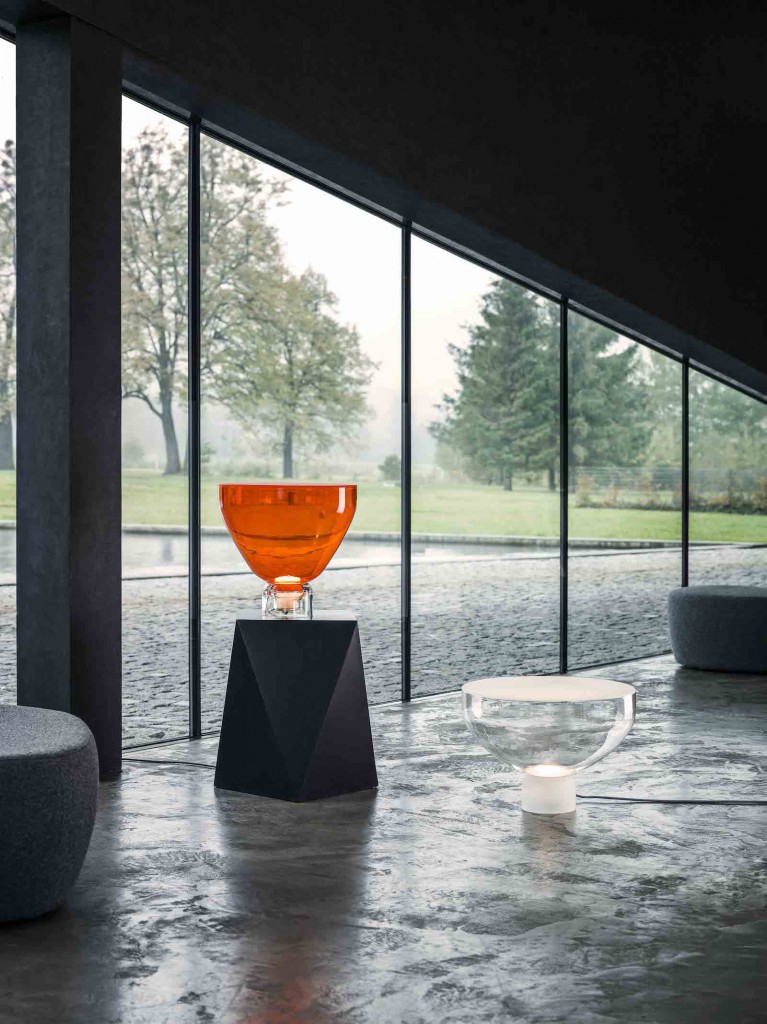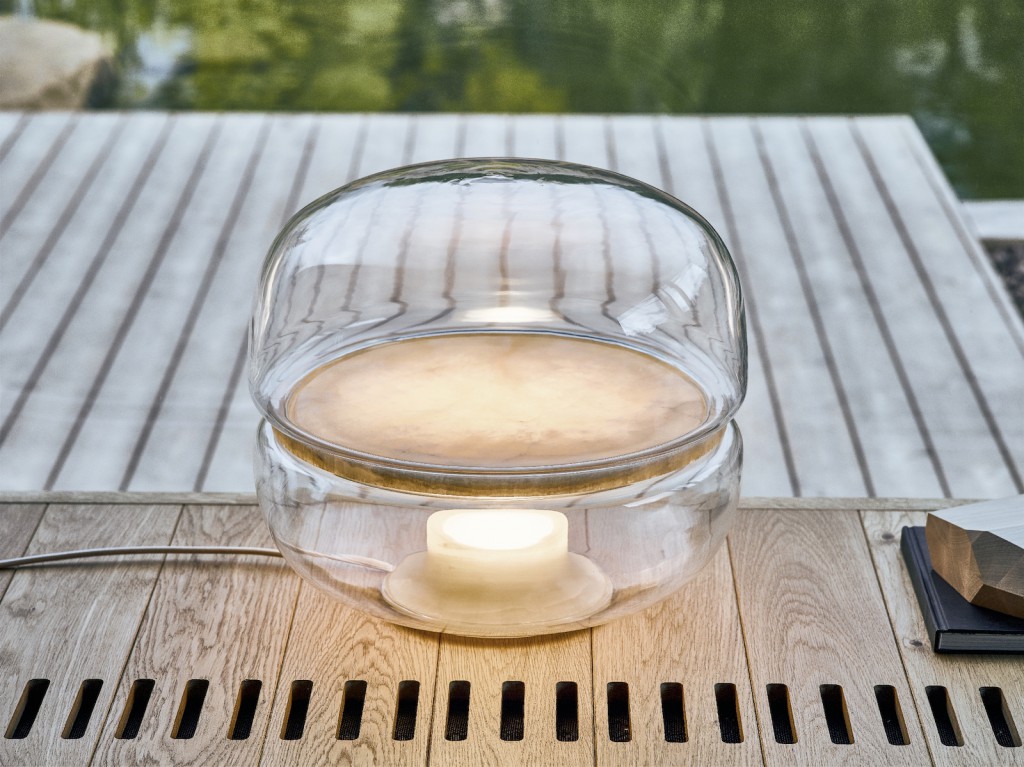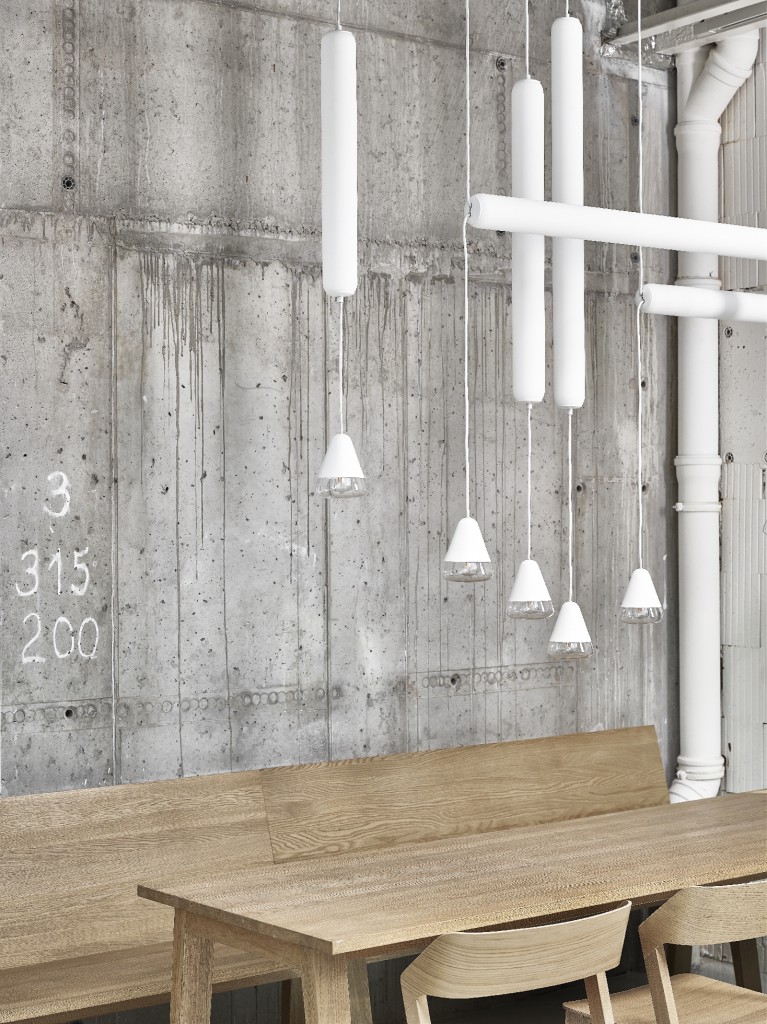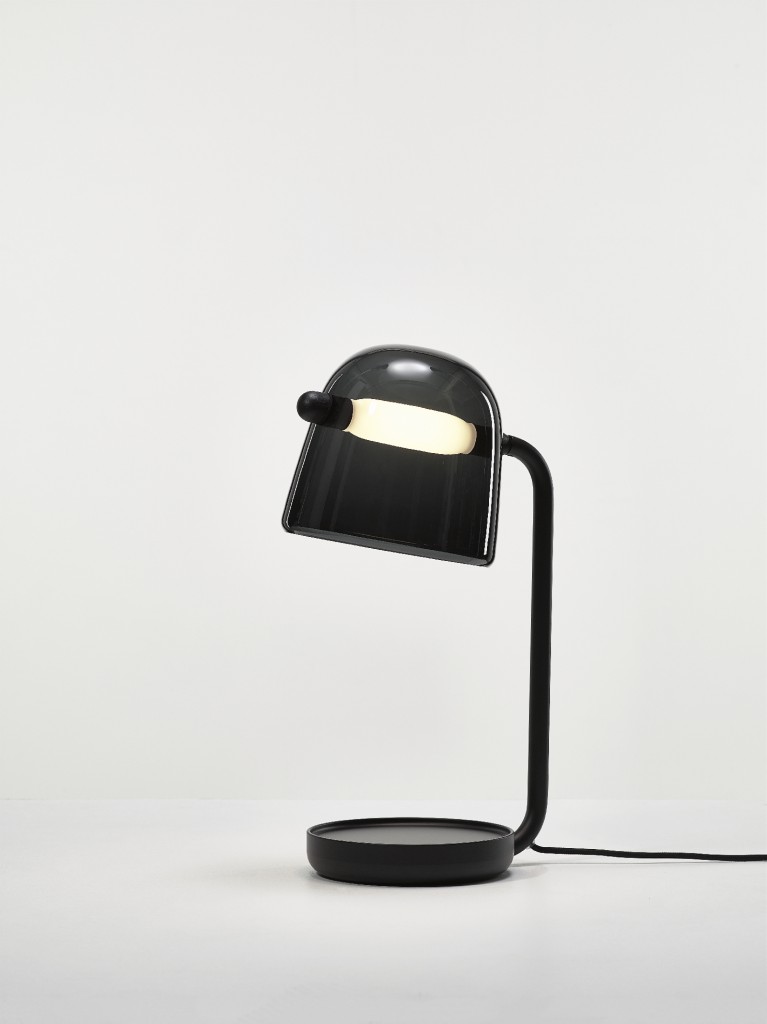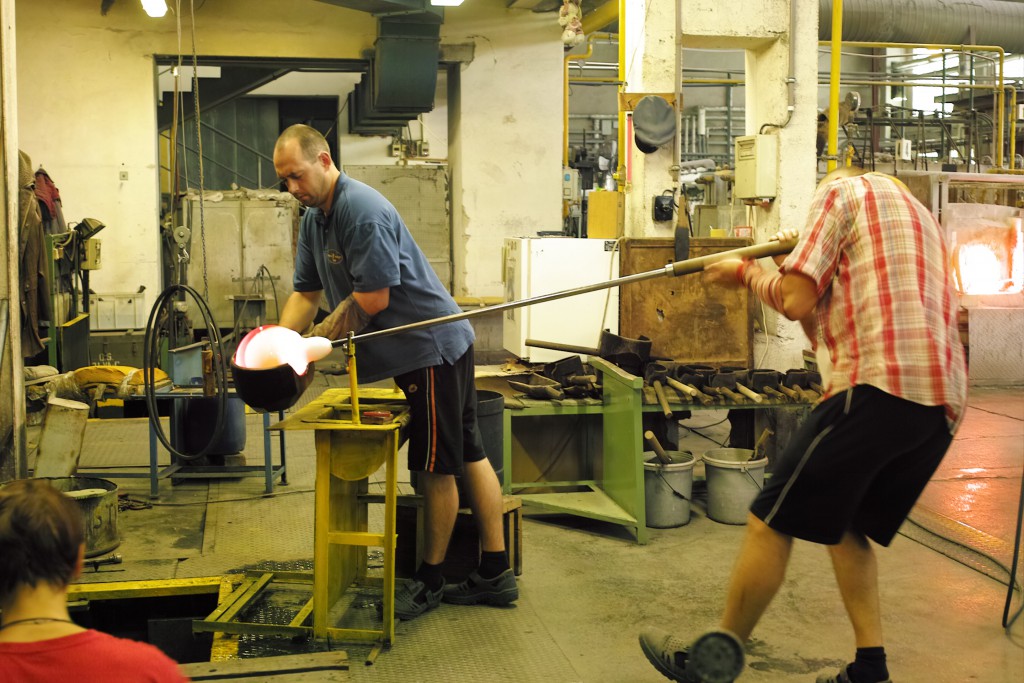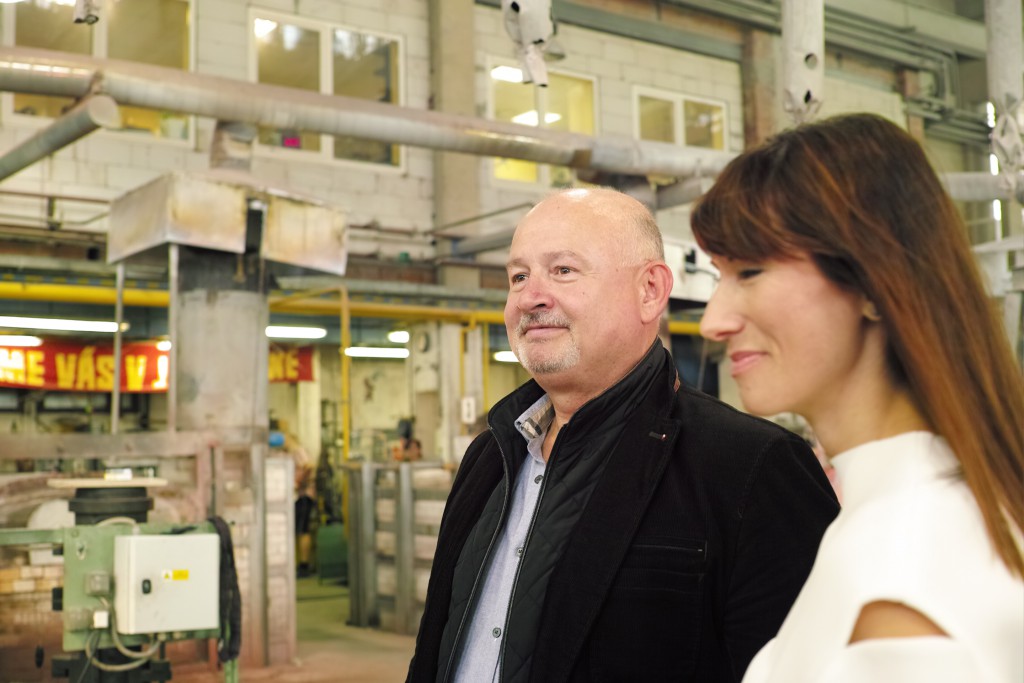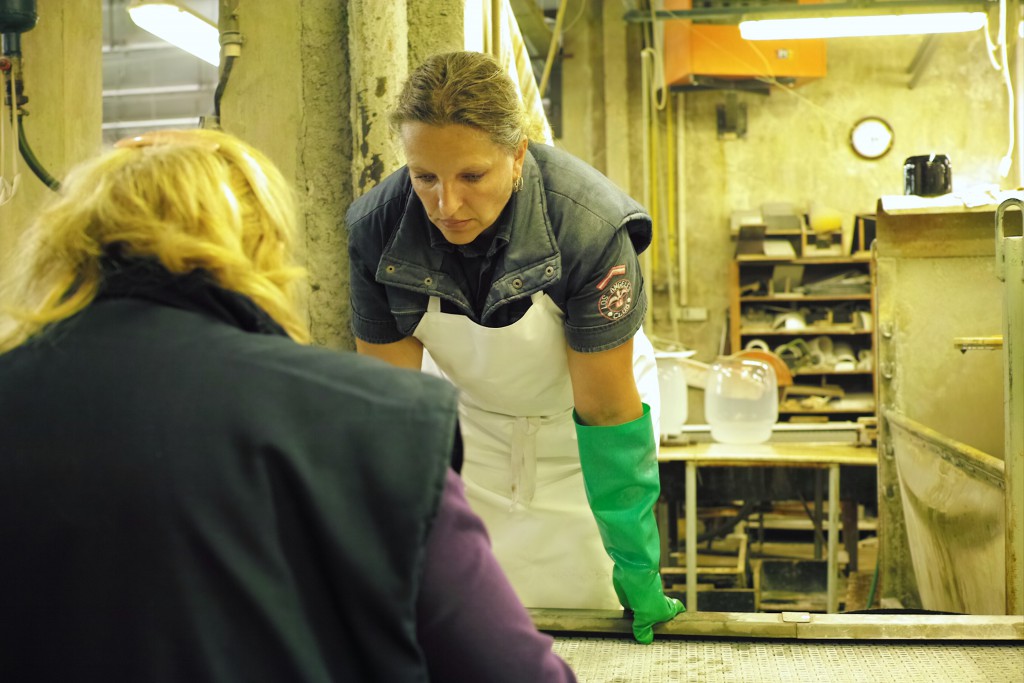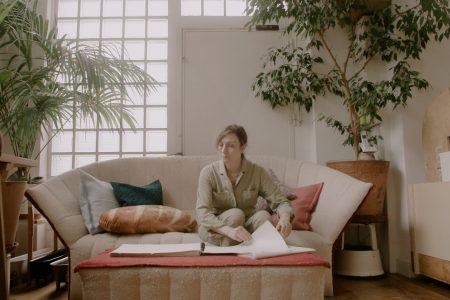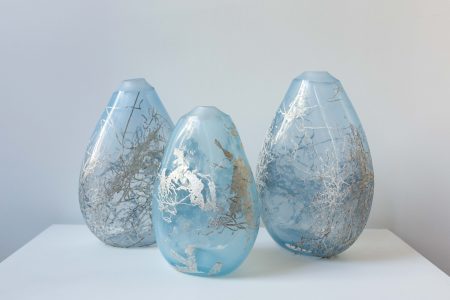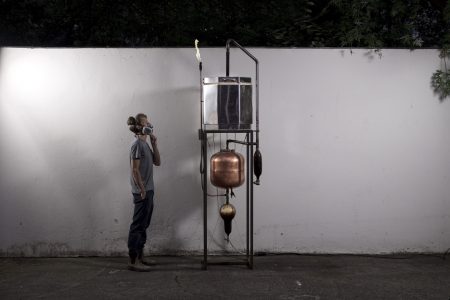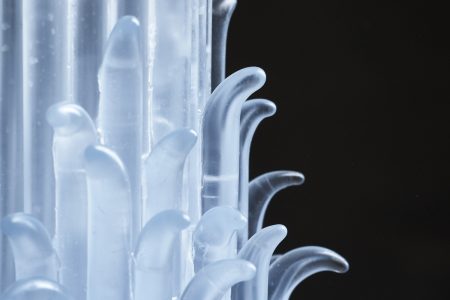Lucie Koldova Is in Das Haus
The Czech designer, lauded for her work as Brokis’ artistic director, is the guest designer for the 2018 edition of imm Cologne’s Das Haus.
For the 2018 edition of Das Haus – Interiors on Stage at imm Cologne, guest designer Lucie Koldova is dividing the space into a room for relaxation, another for inspiration, another for dressing and a final one for the spirit.
But you won’t find a kitchen in her Haus. “I have many other important things to show. In my ideal house, I would not be cooking,” she stated during an imm presentation in her Prague studio.
Since its inception, the simulated-home installation has invited designers to the Koelnmesse to make a personal statement about contemporary living. Beyond aesthetics, “what we’re looking for is a vision,” said Dick Spierenburg, the creative director of imm Cologne. “When [last year’s guest designer] Todd Bracher says he’s going to place a shower outside, that’s vision. When Lucie says it won’t have a kitchen, that’s vision.”
That anti culinary proposal is, indeed, strongly personal. Bracher took the shower outdoors to highlight what is truly elementary in the household; Koldova’s responds to her wishes as a young professional, a wife and new mother. It’s almost as if, through design, she were exploring and establishing the notions of what femininity and her self perceived boundaries as a contemporary woman actually mean to her. To her, a woman’s place is in the kitchenless house.
Gender inequality is still an issue in the design industry —not necessarily numerically, but in terms of opportunities for leadership, a subject frequently studied by the likes of the AIGA. In the 2014 edition of Das Haus, Louise Campbell presented her wall-less, secret-less dwelling. That home proposal meant to explore how design could help smooth incompatibilities between men and women; it seems that Koldova’s is trying to shine a beautifully designed light on the self-incompatibilities that come with being a female entrepreneur in 21st century Europe. That she is a poster child for the current Czech design revival only adds to that quest.
Now 34, she grew up in Ústí nad Labem, an industrial city, but it might as well have been Themyscira: Koldova is the product of a household where she was told “not to worry about little things, like cooking. Instead, my mother told me to work hard to achieve I wanted.” During her studies at the Academy of Arts, Architecture and Design in Prague, her designs of multifunctional office tables were peppered with references to the strength of sport —“working hard” also meant excelling as a long jumper and triple jumper.
And then Paris happened.
She joined Arik Levy’s studio in 2009. After working in the city for a year, she realised that no matter how much she evaluated herself mostly on terms of creative output, gender acted as a career impediment of sorts. “Paris was all about networking, about those drinks after work,” she said. “And men have it easy. It’s easy for them to talk with each other, they’re allowed to be more social.” Truth be told, there is nothing like the similarities in others to bring out the differences in us.
Afterwards, her designs started to shift from speaking of traditional strength to winking at the sweet pleasure of carb-based comfort foods. In 2010, a softly rounded lamp collection for Czech lighting brand Brokis, named Muffins, earned her international attention. For someone whose name literally means light, as she jokes, she found herself on the right path.
Because then there was Jan Rabell.
A Prague investment banker turned glassware factory owner, the local economy has fashioned the Brokis president into an equal-opportunity employer: the Czech Republic has the lowest unemployment rate in the EU —according to Eurostat, in June of this year it was a baffling 2,9 percent compared to the eurozone average of 7,7— and a large percentage of its workers belong to the manufacturing sector. Factories like his, therefore, are forced by market competition to hire employees based on talent and disposition, regardless of gender. A walk through the plant in the rural Horní Dubenky village, where 75 employees mix, blow, cut, clean and package glass, reveals a parity in numbers. There, posters of bikini-clad women adorn the walls on one side, while a collage of American, Italian and Czech heartthrobs occupies a large part of another. And even if there’s only one female worker in each one of the five-person teams handling the heating, cooling, blowing, moulding and cutting, they outnumber their male coworkers in the other sections and even in some managerial positions at the nearby offices.
The most visible one of them is, of course, Koldova. In 2012 the hands-on and picky Rabell handpicked her to become Brokis’ artistic director. After purchasing the long-running company in 1997 —the mothership, Janštejn, has operated continuously for more than 150 years—, he was bent on adding several layers of glass and blowing new air into the venture. He founded the design-oriented offspring Brokis in 2006, and needed a certain type of pieces to jumpstart it. His bet paid off: Brokis is now exporting to more than 70 countries. What made him pick Koldova as the person who would come up with the designs the company needed?
– “She brought her proposals and they were great. They had the image I wanted for Brokis,” he said during a meeting at the company’s headquarters. “And she pushes. She pushes and pushes,” he said of his artistic director, who has previously stated that her aim is to turn Brokis into one of the most powerful glass lighting brands in Europe.
– “But I was working hard,” she replied, jokingly hurt.
– “Yes, she *motions pushing with hand*,” he added with a knowing laugh.
“That’s one of the difficult things about being a female designer,” she said at the Das Haus presentation. “People see you’re a leading a team, and they say, ‘Ooooh, she must be strong’.” That is, indeed, one side of her. But beyond that inference, how many multitudes are women leaders being allowed to contain nowadays?
That’s why design has been such a rich outlet for her to explore this interior dichotomy: when asked to define her style, she happily speaks of it with terms like both “smart” and “sensual” —that is, “a smart construction of an object wrapped up in a sensual form. When I work with glass, I want to show off my feminine side.” That a female designer chooses to refer to her femininity as a “side” is a strong argument against the industry custom of referring to female designers as female designers, instead of merely designers.
Her following collections for the glassmaking company, with the drum-like Lightline in particular, have become sales hits. “[But designing for] Brokis is a lot of responsibility, because the collection needs to be safe and you can’t do costly experiments,” she explained. “That’s why Das Haus is a playground for us.” Part of that play is a new lighting structure called Ivy, which extends its white luminosity like the leaves of the plant that inspired it. Another is a novel fire-like composition of the Puro lamp, and two other prototypes are still unrevealed —“I want them to be a surprise,” she added mischievously.
These playful objects require the type of technical complexity that, fortunately, a glassmaking company with more than a century of collected know-how can provide. “I am not a technical person,” she said. “It’s an easy decision in my heart, but a difficult one in my head: this project requires so many architectural and technical skills. I’m working closely with the company to help me calibrate the temperature or the dimming system.” A day later, while a team of glassblowers was heating and moulding a series of her Mona lamps at the factory, she laughed at herself for wearing an —admittedly intriguing— 3D-printed plastic shirt in a space reigned by fire.
In the 180 m2 honeycomb-like installation for Das Haus, while there’s no kitchen, there’s all manner of environments. The rooms are divided by atmospheres, achieved through different Light Levels —the title of her proposed abode. “In my Haus, light will play the main role, and the furniture will complete the rooms – and not the other way around,” she explained. For example, in darker moods one is compelled to share; in others, the way the direct and indirect light emissions hit textiles, textures and concrete rules the use of both furniture and space. In other words, the same light is allowed to be very diverse, depending on the environment.
After visiting her studio I went for a short walk around Prague. The Indian summer was being swiftly replaced by an unforgiving autumn, so I was looking for a scarf in Na Příkopě, a shopping street. As I entered a store, two young salesgirls were discussing, in English, what an absolute bummer and waste of time it was having to cook at home.
Koldova might be on to something.
The next imm cologne 2018 show will take place from Monday, 15th to Sunday, 21th January 2018.
